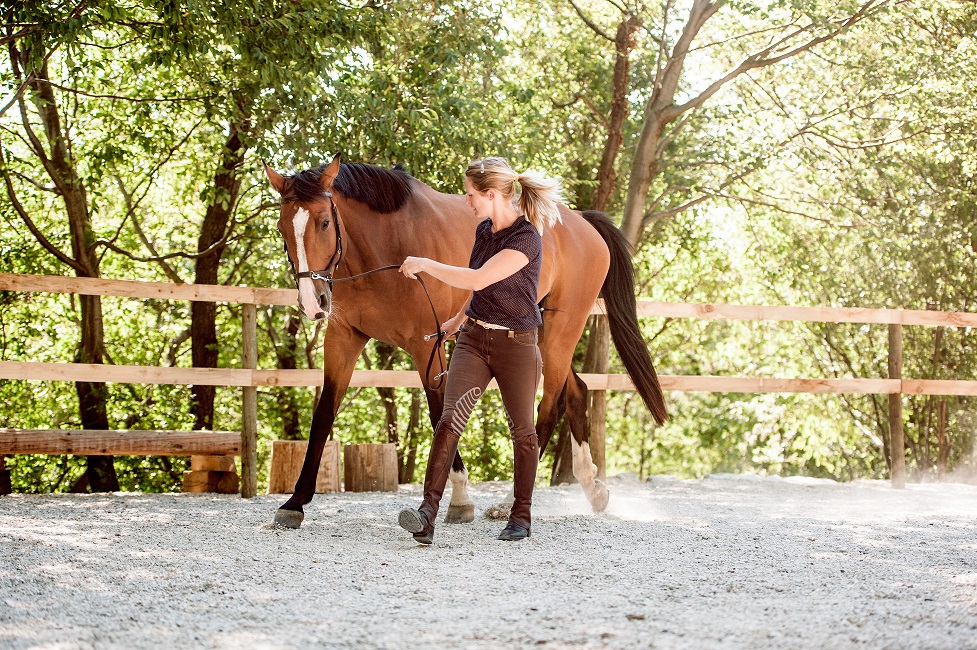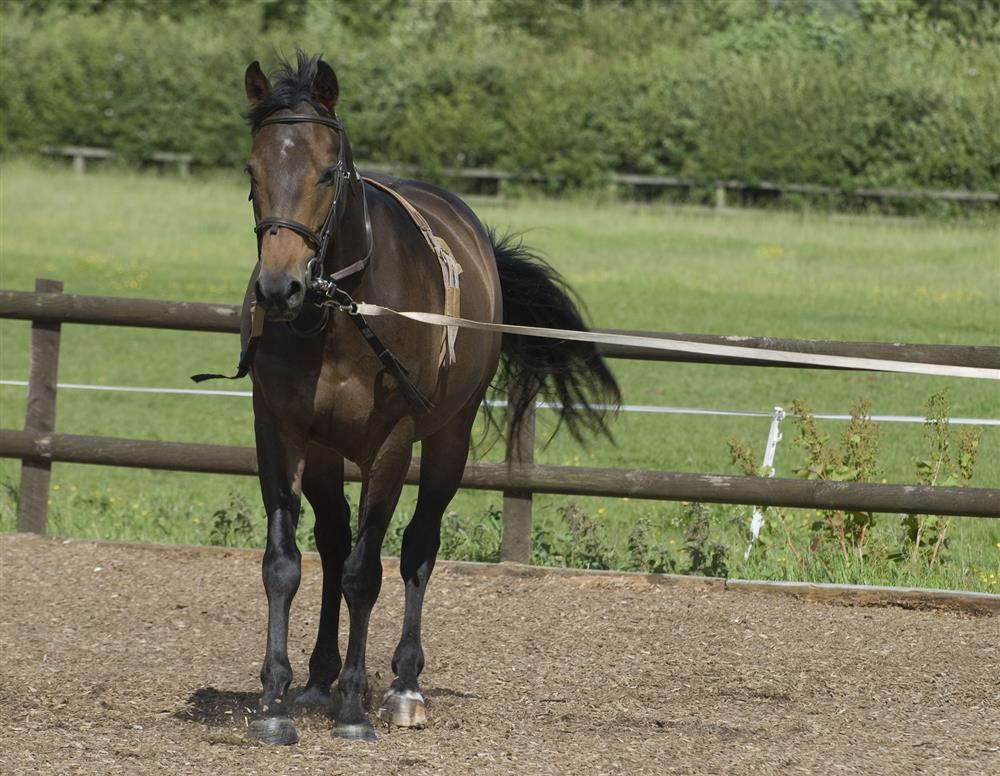Bringing a horse back into work
It finally feels as though spring has arrived, and it is around this time of year that many riders are thinking about bringing their horses back into work if they’ve had some time off over the winter months. If injury is the reason your horse has had time off, it is important to follow the vet’s advice on bringing the horse back into work to reduce the risk of the injury reoccurring or causing fresh injury to the associated structures. Dependending on the type of injury, your horse may have had a period of time on box rest or paddock rest, or a combination of both. When it comes to bringing your horse back to work, it is likely your vet will suggest an exercise plan that will begin with groundwork.

Groundwork
Often the case after injury, the vet will instruct to start building the horse’s strength from the ground, before ridden work commences. Generally, this will begin with in-hand walking. It is often a good idea to use a bridle, lunge line and for the handler to wear a hat, regardless of whether or not the horse is quiet. Your vet will advise on duration and frequency of the in-hand walking sessions.
If the horse has only been off work due to rider’s circumstances, then in-hand walking may not be necessary, but groundwork is still beneficial. Consider long reining as an effective method for building strength and muscle after time off. If the horse has had substantial time off, it can be a helpful reminder of tack and their surroundings. Lunging can also be helpful but be mindful that it can cause strain on the limbs if done excessively.
Increasing fitness
When progressing to ridden work, if your horse is coming back to work following an injury, ensure that you follow your vet’s advice on a fitness plan.
Before restarting ridden work, it is a good idea to have your horse’s saddle checked by an experienced saddle fitter, and teeth checked by a qualified equine dental technician or vet. A well fitted saddle is crucial to the comfort and wellbeing of the horse, as a poorly fitting saddle can cause severe pain and discomfort. Regular dental check-ups are important for all horses to reduce the risk of issues arising or abnormalities going unnoticed, which will cause issues with ridden work. Further information on how dental issues can affect the horse can be found here. Additionally, your horse may suffer with muscular soreness when coming back into work, so sessions with an equine sports massage therapist can prove beneficial.
It is always recommended to begin any fitness plan with walking. Duration of the exercise will depend on length of time off, but as a guide, for a horse that has just had a few weeks off, and was previously fit and in regular work, start with 20 minutes walking per day. From this, introduce trot work when you feel the horse is ready, and similarly, increase the duration or trotting in each session. Consider using hill work and pole work to strengthen the hind quarters and try to use varied surfaces where possible.

Review diet
It is essential for all horses, whether they’re in ridden work or not, to have access to good quality forage at all times to aid digestive health. When reducing your horse’s workload, if your horse was previously receiving a hard feed, you may have reduced this accordingly. Whilst bringing the horse back into work, it is important that feeds aren’t increased too quickly. A high fibre diet of forage along with a feed of good quality chaff, with a vitamin and mineral supplement such as Benevit (plus any other required supplements), is generally all they need.
Using a calmer
For some horses, the idea of coming back to work after some time off can be quite exciting! If you are concerned that getting back the saddle may prove challenging on a sharp horse, then consider using an effective calmer, such as Feedmark’s Steady-Up.
Steady-Up includes the herbs Chamomile and Lemon Balm, both of which are used for their calming and soothing effects on the nervous system. Two types of Magnesium are provided to help with the regulation of nervous tension, and B vitamins which promote optimum nerve function. Steady-Up also contains Brewer’s Yeast to maintain a healthy hind gut which is especially helpful during times of stress.
More information on how Steady-Up can help your horse can be found here.
Summary
- Follow your vet’s advice on a fitness plan if your horse is returning to work following an injury.
- Use a qualified saddle fitter to check the fit of your saddle, and an equine dental technician to check your horse’s teeth before beginning work.
- Groundwork can be helpful to begin with. In-hand walking, or long reining can help to begin building strength after substantial time off.
- Always begin a fitness plan with walking! The duration and frequency of sessions is dependent on how long the horse was off work for, and whether injury was the reason for this time off.
- Build up intensity and duration of exercise sessions slowly - this is crucial to prevent injury.
- Add the effective calmer, Steady-Up, to promote sensible behaviour.

